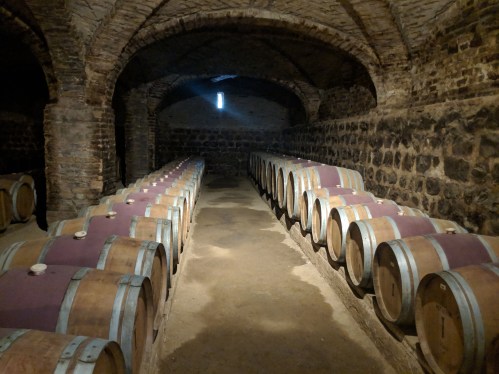One of my favourite things to do when travelling is find a nearby wine region and explore it a bit. So far my partner Christine and I have been to Sonoma and Napa in California, and Prince Edward County right at home in Ontario. So it made sense to take a tour in the Mecca of South American wines — Chile. We were there for a few weeks in February and between the hiking and sight seeing I insisted on time for wine.
Sometimes it’s not always about finding the most obscure or artisinal vineyard to take a tour in. Such was the case when I chose Santa Rita — it’s a massively popular, mid-to-low shelf wine producing primarily vanilla-bomb Cab Sauvs (among other varietals I’ll mention in a bit.) What it does have is space, infrastructure, history and plenty of transport to and from for English speaking tourists. And you know what? It was kind of fun setting aside snobbery for a second and enjoying the experience. Plus, the Santa Rita Cab Sauv was like, the first wine I got seriously drunk on.
Here’s what we got on our tour:
Wine Tour of Santa Rita Vineyard
I’m going to quickly shout out A) Trip Advisor and B) Turistik (the tour company) for making booking damn easy and touring even easier. Chile is a place where English doesn’t hold much water, which can make both communicating with your guide and learning from a tour a bit tricky. Turistik has fluent guides, were easy to track down and got us to and from Santa Rita lickity split with no issues. Kudos.
We opted for the bike tour of Santa Rita because it’s a beautiful large property and enjoying a class of wine amongst the vines was 90% of the pleasure because, lets be honest, Santa Rita’s wine isn’t exactly blowing any minds. We meandered as a group with our guide offering Spanish, English and Portuguese explanations about the different grapes, the local climate, and the expected yields.
By far the most interesting part of the tour was seeing the plaque commemorating the discovery of a once-believed to be extinct wine varietal — Carménère. After a plague devastated wine regions around the world in the 19th century, Carménère seemingly disappeared, until 1994, when researches discovered some growing among Merlot in the Santa Rita vineyard. Today they remain among one of the largest producers of this interesting grape, and visiting the historic spot made the trip more than worth it for this wine nerd.
As for the drinking, there were plenty of opportunities. We stopped during our bike ride under a quaint Gazebo to enjoy a glass of white supplied by the tour group. At the end of the ride, we were treated to a rather laughable anamatronic show, documenting the history of Santa Rita, and finally onto the wine tasting proper. We received a respite from the heat in the Santa Rita cellars, and tried three different wines, including the Reserve and even a more upscale Carménère. Maybe it was the location, but I can’t remember enjoying a cheap-and-cheerful glass more than at that moment.
***
If you’re a winehead going to Chile, odds are you’ve got better, more niche vineyards in mind. But if you’re a tourist, I can definitely recommend a Santa Rita wine tour. It’s accessibility from Santiago, beautiful landscape, interesting history and, uh, drinkable wine all make the trip worth while.



